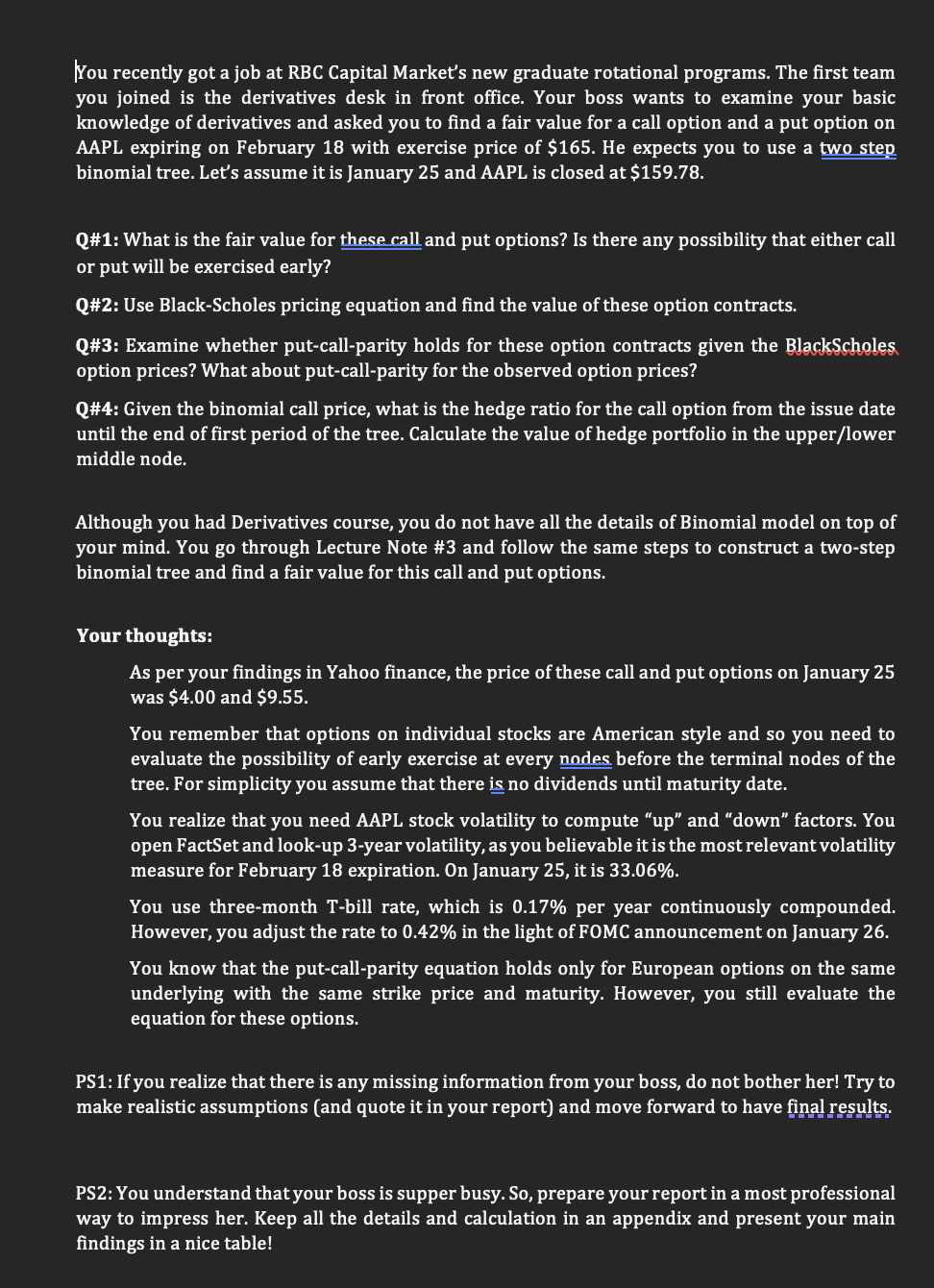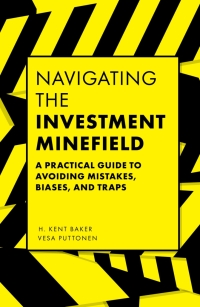
You recently got a job at RBC Capital Market's new graduate rotational programs. The first team you joined is the derivatives desk in front office. Your boss wants to examine your basic knowledge of derivatives and asked you to find a fair value for a call option and a put option on AAPL expiring on February 18 with exercise price of $165. He expects you to use a two step binomial tree. Let's assume it is January 25 and AAPL is closed at $159.78. Q\#1: What is the fair value for these call and put options? Is there any possibility that either call or put will be exercised early? Q\#2: Use Black-Scholes pricing equation and find the value of these option contracts. Q\#3: Examine whether put-call-parity holds for these option contracts given the BlackScholes option prices? What about put-call-parity for the observed option prices? Q\#4: Given the binomial call price, what is the hedge ratio for the call option from the issue date until the end of first period of the tree. Calculate the value of hedge portfolio in the upper/lower middle node. Although you had Derivatives course, you do not have all the details of Binomial model on top of your mind. You go through Lecture Note \#3 and follow the same steps to construct a two-step binomial tree and find a fair value for this call and put options. Your thoughts: As per your findings in Yahoo finance, the price of these call and put options on January 25 was $4.00 and $9.55. You remember that options on individual stocks are American style and so you need to evaluate the possibility of early exercise at every nodes before the terminal nodes of the tree. For simplicity you assume that there is no dividends until maturity date. You realize that you need AAPL stock volatility to compute "up" and "down" factors. You open FactSet and look-up 3-year volatility, as you believable it is the most relevant volatility measure for February 18 expiration. On January 25 , it is 33.06%. You use three-month T-bill rate, which is 0.17% per year continuously compounded. However, you adjust the rate to 0.42% in the light of FOMC announcement on January 26. You know that the put-call-parity equation holds only for European options on the same underlying with the same strike price and maturity. However, you still evaluate the equation for these options. PS1: If you realize that there is any missing information from your boss, do not bother her! Try to make realistic assumptions (and quote it in your report) and move forward to have final results. PS2: You understand that your boss is supper busy. So, prepare your report in a most professional way to impress her. Keep all the details and calculation in an appendix and present your main findings in a nice table







